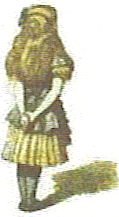True creativity often starts where language ends.
Arthur Koestler
For those who engaged the issue of intuition, can we say that this is very close to what creativity is ,and the quote suplied above, is in essence. Is the mind, having come to a point on the Aristotlean arch, as, having fully understood, that work with reason and insight would have been to see that, the medium what ever it is, is held to this regard?
If the question is held in context of the mind and foci is strong, in what probabilistic venue would we see such events as issuing from someplace? This I would say would be the "unconscious" and in having diagramed this in a schematic way, how is it that such causations, might have been tied to the fisherman's line and lure, that is sent deep into a future for an examination result.
Of Koestler’s many books, his powerfully anti-Communist novel Darkness at Noon (1941) is still the most famous, but he wrote one book that focused squarely on the paranormal – The Roots of Coincidence (1972). Here, he attempts to find a basis for paranormal events in coincidence, or more precisely synchronicity, so that there is only one phenomenon to explain rather than many. He proceeds to seek the roots of coincidence in the Alice-in-Wonderland world of quantum physics, the infinitesimally small subatomic realm where our everyday logic no longer holds sway, where particles can be waves and vice versa, where forces that only mathematical equations can glimpse swim in the dark, unfathomable ocean of probability before the manifestation of either matter or mind. Towards the end of the book, Koestler pleads that parapsychology be made “academically respectable and attractive to students”, otherwise the “limitations of our biological equipment may condemn us to the role of Peeping Toms at the keyhole of eternity”.
So it was gathered all around, everything that we were involved with, and out of it, a solution abstractually engaging the mind in symbolisms of a language not understood. But still relevant. What would this new language be, if it had run it's course previously, and we needed new insight. We were careful then in understanding the porgress can be made in our expectancy, as well as having full confident in the self, to explore these unknown regions.
Who better then to create the dialogue necessary in bringing forth the creative flow, if we had acknowledged the teacher and student, within ourselves?
Art Mirrors Physics Mirrors Art, by Stephen G. Brush
The French mathematician Henri Poincaré provided inspiration for both Einstein and Picasso. Einstein read Poincaré's Science and Hypothesis (French edition 1902, German translation 1904) and discussed it with his friends in Bern. He might also have read Poincaré's 1898 article on the measurement of time, in which the synchronization of clocks was discussed--a topic of professional interest to Einstein as a patent examiner. Picasso learned about Science and Hypothesis indirectly through Maurice Princet, an insurance actuary who explained the new geometry to Picasso and his friends in Paris. At that time there was considerable popular fascination with the idea of a fourth spatial dimension, thought by some to be the home of spirits, conceived by others as an "astral plane" where one can see all sides of an object at once. The British novelist H. G. Wells caused a sensation with his book The Time Machine (1895, French translation in a popular magazine 1898-99), where the fourth dimension was time, not space.
So, would we have recognized some of these features, in the way the words are written, or how the question mark, would transcended the inspiration sought and found from others, who would propel us forward? The conditions then and foundational attitudes had to rely on what history had already gone through, that we might have recognized also the work that Poincare might have relinquished in that dialogue. To have propelled other minds, like Picasso or Einstein forward?
Is this where "time" became something of a issue with the space coordinates, that such resolution might have paved the way for a spacetime? Answered, what the fourth dimension actually was? Such progression then would have been important, as we move forward in society that not only had Poincare provided the prospect, but that also Grossman in the geometrically refined views sought out as well, to contribute to the troubles Einstein was facing?
Where these might have thought to be random, the events are tied together? Are seen in the actualization of what trasncended these two random events? Or were they?
We talk about the historical time and around then, what was happening if we had seen information on Flatland and Abbott? Issues of mysticism held in context of what those extra dimensions might actually mean.
Out of this, a new found responsibility, as to how such mysticism once held in the spookiness of Einstein, has now an explanation that has been further refined in what a Anton Zeilinger might have been doing for us?



